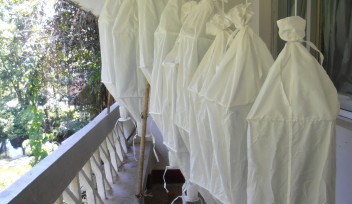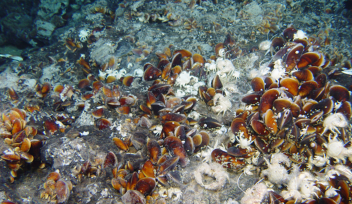Phase Diagram for Viscoelastic Flow Over Wavy Surfaces

This phase diagram summarizes results from a study by the Micro/Bio/Nanofluids Unit on the flow of viscoelastic fluids over wavy surfaces. The flow patterns depend on fluid elasticity (encapsulated by Sigma, on the vertical axis) and the depth of the channel relative to the surface wavelength (which is alpha, on the horizontal axis). The bottom-right corner of the diagram is the specific region where the elasticity and the channel depth are in a “sweet spot,” so they combine to result in the vorticity amplification at the “critical layer.”
This phase diagram summarizes results from a study by the Micro/Bio/Nanofluids Unit on the flow of viscoelastic fluids over wavy surfaces. The flow patterns depend on fluid elasticity (encapsulated by Sigma, on the vertical axis) and the depth of the channel relative to the surface wavelength (which is alpha, on the horizontal axis). The bottom-right corner of the diagram is the specific region where the elasticity and the channel depth are in a “sweet spot,” so they combine to result in the vorticity amplification at the “critical layer.”
Copyright OIST (Okinawa Institute of Science and Technology Graduate University, 沖縄科学技術大学院大学). Creative Commons Attribution 4.0 International License (CC BY 4.0).
Tags














